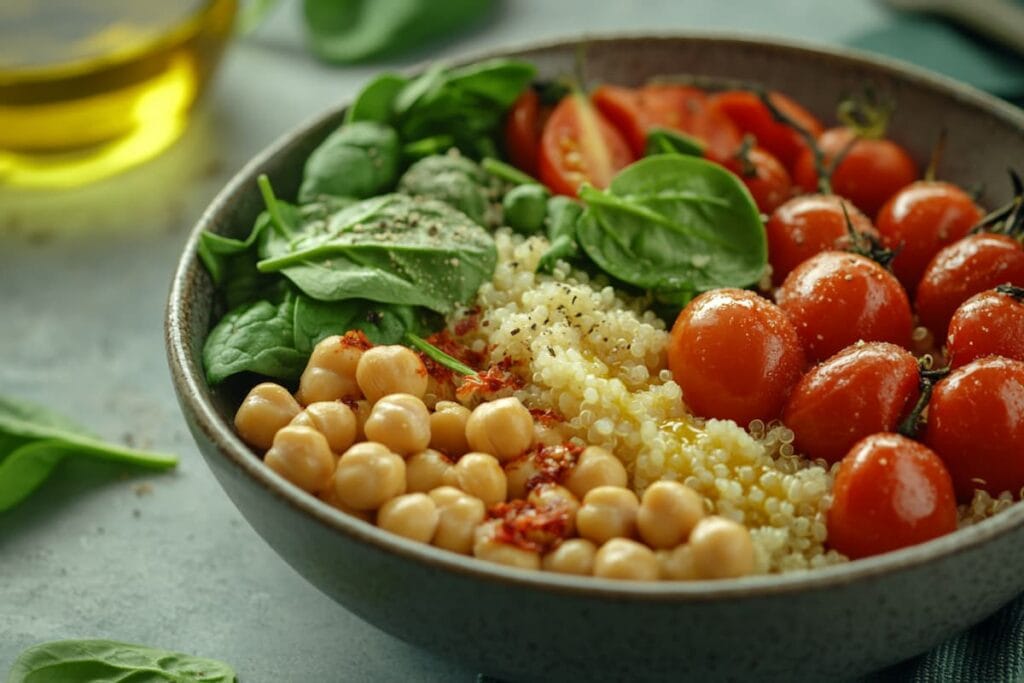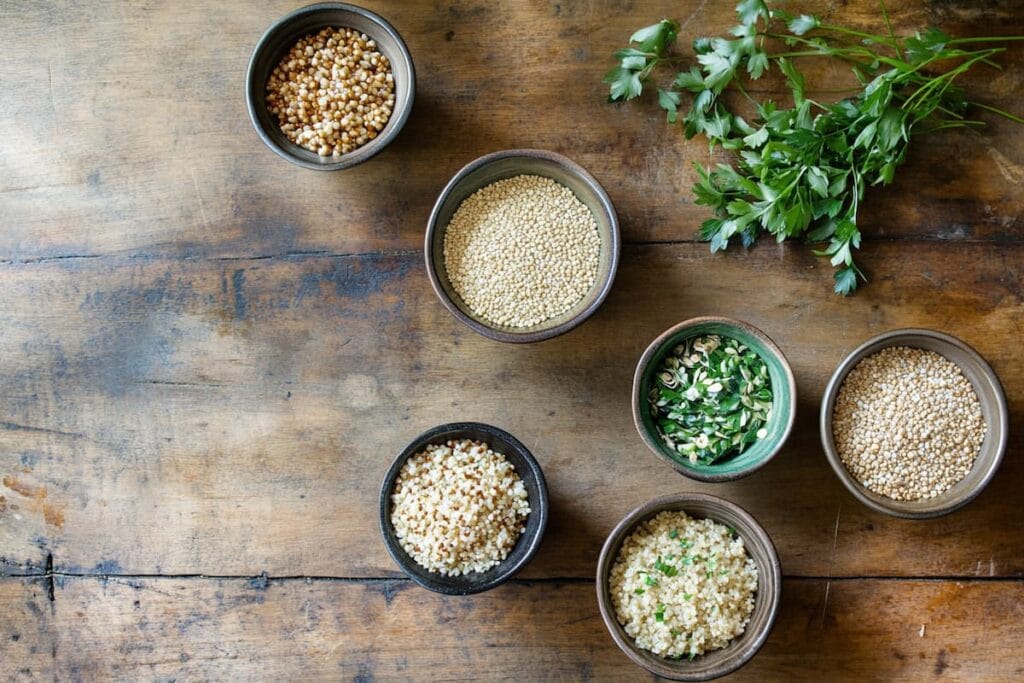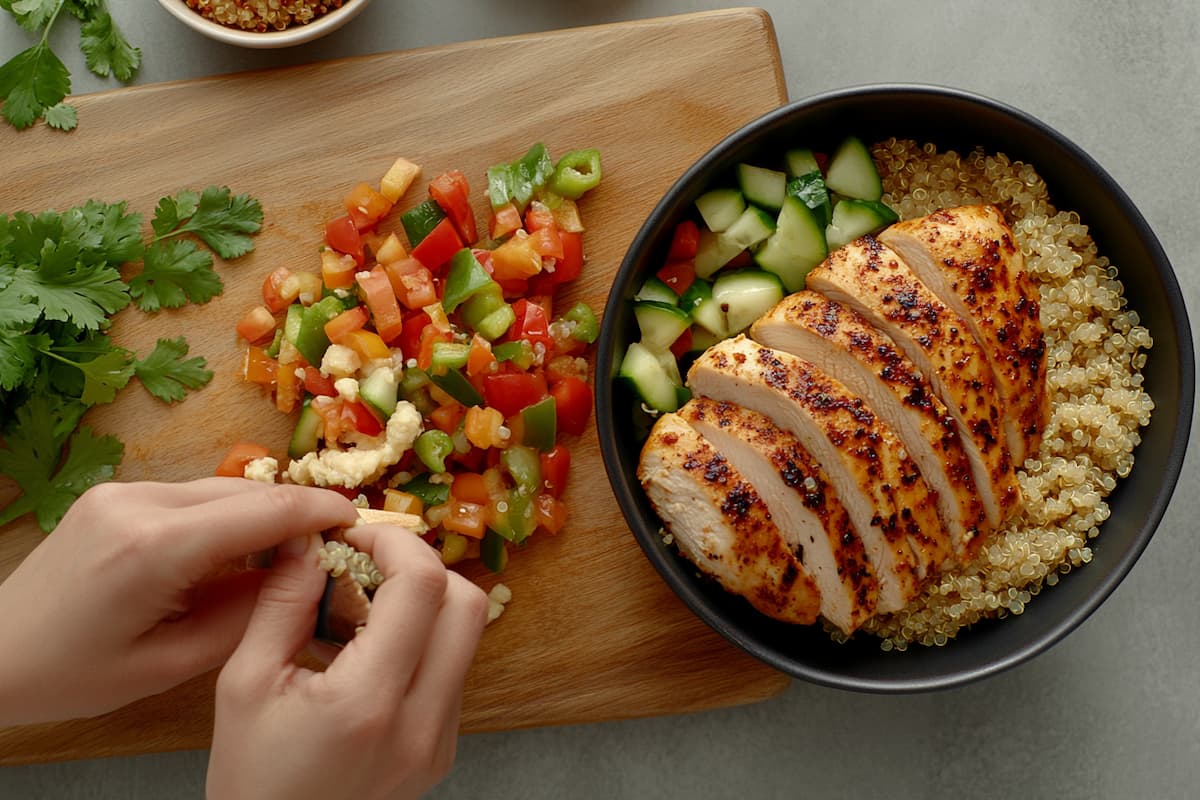How do you stay healthy on a gluten-free diet? Many people ask this question when they first consider removing gluten from their meals. This question matters to anyone who wants to improve their well-being through careful dietary choices. However, staying healthy on a gluten-free diet goes beyond just avoiding wheat, barley, and rye. Instead, it involves eating a broad range of nutrient-rich foods, maintaining balanced meals, and adopting good eating habits. In addition, it requires knowledge, planning, and consistency.
However, understanding how do you stay healthy on a gluten-free diet? requires more than just cutting out gluten. Instead, it means focusing on foods rich in fiber, protein, vitamins, and minerals. For example, non-gluten whole grains like quinoa, buckwheat, and brown rice provide essential nutrients. These options can help maintain a healthy gut and stable energy levels. Therefore, a truly healthy gluten-free lifestyle includes a combination of fresh fruits, vegetables, lean proteins, and gluten-free whole grains.
Table of Contents
Why Is It Important to Stay Healthy on a Gluten-Free Diet?
How do you stay healthy on a gluten-free diet? starts with understanding why health matters in this context. For individuals with celiac disease or gluten sensitivity, removing gluten helps prevent intestinal damage and nutrient malabsorption. However, even if you do not have a medical condition, trying a gluten-free diet without proper guidance can lead to unintended nutrient gaps. Therefore, prioritize balanced nutrition.
In addition, a gluten-free lifestyle often involves careful label reading. Many packaged gluten-free products can be higher in sugar, fat, and calories. Therefore, awareness is essential. By focusing on nutrient density, you can ensure your body receives what it needs. In addition, do not forget that good health also includes regular physical activity, ample hydration, and quality sleep. For example, pairing a well-planned gluten-free diet with moderate exercise can support stable energy levels and better mood.
Getting Started with a Balanced Gluten-Free Lifestyle
When you begin a gluten-free journey, start by building a solid nutritional foundation. However, do not rely only on pre-packaged gluten-free foods. Instead, try integrating naturally gluten-free whole foods.
Consider the following tips:
- Start with naturally gluten-free staples:
Choose whole foods like fruits, vegetables, legumes, and lean meats.
For example, berries, leafy greens, beans, lentils, fish, and poultry.
These provide vitamins, minerals, and fiber for gut health. - Explore new gluten-free grains:
Incorporate quinoa, millet, buckwheat, brown rice, and certified gluten-free oats.
These add diversity, fiber, and essential nutrients to your meals. - Embrace healthy fats:
Include avocados, nuts, seeds, and olive oil.
These support absorption of fat-soluble vitamins and provide long-lasting energy. - Choose lean proteins:
Opt for chicken, turkey, fish, eggs, and legumes.
Protein supports muscle maintenance, hormone production, and cell repair. - Stay hydrated:
Drink enough water each day.
Proper hydration improves digestion, supports metabolism, and boosts overall well-being.
By following these steps, you build a solid nutritional base. In addition, consider adding variety and experimenting with seasonal produce. For example, trying new fruits and vegetables ensures you get a range of nutrients. Therefore, you can better maintain good health while living gluten-free.
Planning Meals for Long-Term Success
Meal planning helps ensure you get the nutrients needed to thrive on a gluten-free diet. However, do not let planning overwhelm you. Instead, break it down into small steps and focus on consistency.
Meal Planning Tips:
- Begin with a weekly meal plan:
Sketch out breakfast, lunch, dinner, and snacks.
This prevents last-minute unhealthy choices. - Batch cook and freeze portions:
Prepare large batches of soups, stews, or gluten-free casseroles.
Freeze in portioned containers for quick meals. - Focus on simplicity:
Use simple recipes with whole ingredients.
For example, grilled chicken with roasted vegetables and quinoa. - Rotate recipes to maintain variety:
Prevent boredom by rotating meals each week.
For example, if you enjoy a lentil salad, switch the legumes or vegetables next time. - Include nutrient-dense snacks:
Snack on nuts, seeds, and fresh fruit.
Avoid sugary, processed gluten-free products.
By implementing these strategies, you create a roadmap to success. In addition, planning helps you identify gaps in your diet. Therefore, you can adjust to ensure optimal nutrient intake and prevent deficiencies.

Identifying Common Nutrient Deficiencies
When asking how do you stay healthy on a gluten-free diet? consider potential nutrient gaps. Removing gluten can sometimes remove fortified wheat products that contain certain vitamins and minerals. However, with awareness and proper planning, you can prevent deficiencies.
Nutrients to Watch:
- B vitamins (especially folate and B12):
Gluten-containing grains often come fortified.
Without them, ensure you eat dark leafy greens, eggs, and fortified gluten-free cereals. - Iron:
Iron helps form red blood cells and prevents fatigue.
Include spinach, legumes, lean meats, and sunflower seeds. - Calcium and Vitamin D:
Calcium supports bone health, and Vitamin D aids absorption.
Add dairy (if tolerated), fortified plant milks, leafy greens, and mushrooms. - Fiber:
Fiber supports digestion and gut health.
Eat fruits, vegetables, legumes, and gluten-free whole grains like quinoa and brown rice. - Protein:
Protein maintains muscles and supports overall health.
Lean meats, fish, eggs, tofu, tempeh, and legumes are excellent sources.
By monitoring your intake, you can fill nutritional gaps. In addition, consider a multivitamin or consulting a healthcare professional to ensure optimal health.
Reading Labels and Avoiding Hidden Gluten
Ensuring your diet is gluten-free requires diligent label reading. However, do not let complex ingredient lists discourage you. Instead, learn common gluten-containing ingredients and be vigilant.
Key Tips:
- Learn gluten-containing grains:
Wheat, barley, and rye are the main sources.
Avoid any ingredients derived from these grains. - Check for certification:
Look for a “certified gluten-free” label on packaged foods.
This ensures strict testing and reduced risk of cross-contamination. - Beware of sauces and condiments:
Soy sauce, salad dressings, and marinades often contain hidden gluten.
Choose tamari or gluten-free soy sauce instead. - Careful with processed meats and soups:
Some contain fillers or thickeners from wheat.
Check labels for modified food starch or malt flavoring. - Ask questions at restaurants:
Confirm that dishes are prepared away from gluten-containing ingredients.
Request a dedicated gluten-free preparation area if possible.
By being cautious, you minimize accidental gluten exposure. In addition, after some practice, label reading becomes second nature. Therefore, you can confidently maintain your gluten-free lifestyle.
Cooking Tips to Enhance Flavor and Nutrition
Learning to cook delicious gluten-free meals helps you enjoy the process. However, a gluten-free diet does not mean bland. Instead, use fresh herbs, spices, and cooking techniques that highlight natural flavors.
Gluten-Free Cooking Strategies:
- Experiment with herbs and spices:
Rosemary, thyme, basil, and cilantro add depth.
Turmeric, paprika, and cumin create unique flavor profiles. - Explore gluten-free flours:
Almond flour, coconut flour, and brown rice flour provide unique textures.
Combine different flours for better flavor and consistency. - Roast and grill for flavor:
Roasting and grilling intensify sweetness in vegetables and meats.
This reduces the need for heavy sauces. - Add citrus and vinegar:
Lemon juice or apple cider vinegar brightens dishes.
Balancing acid and fat enhances the overall taste. - Try international cuisines:
Many global cuisines offer naturally gluten-free options.
For example, Thai curries served with rice or Mexican dishes with corn tortillas.
By embracing these techniques, you create enjoyable meals that support health. In addition, you become more confident in the kitchen. Therefore, cooking at home can become an enjoyable routine.
Incorporating Fermented Foods and Probiotics
Maintaining gut health remains crucial for overall well-being. However, some people notice digestive issues after going gluten-free, especially if they lack certain fibers. Therefore, consider fermented foods to support beneficial gut bacteria.
Fermented Foods to Include:
- Yogurt (if dairy-tolerant):
Rich in probiotics that support gut microbiome.
Choose plain, unsweetened, and certified gluten-free brands. - Kefir and kombucha:
Fermented beverages that aid digestion.
Enjoy them as occasional treats rather than staples. - Sauerkraut and kimchi:
Fermented vegetables packed with beneficial bacteria.
Provide fiber, vitamins, and tangy flavor. - Miso (ensure gluten-free):
Fermented soybean paste that adds umami to soups.
Check labels, as some miso contains barley. - Tempeh (gluten-free):
Fermented soy cake high in protein and probiotics.
Add it to stir-fries and salads.
By adding fermented foods, you improve digestion and nutrient absorption. In addition, a healthy gut may support immune function and mood regulation. Therefore, fermented foods can help you thrive on a gluten-free diet.

Managing Your Weight and Energy Levels
Staying healthy on a gluten-free diet also involves maintaining stable weight and energy. However, switching to gluten-free alternatives does not guarantee weight loss. Instead, focus on nutrient balance and portion sizes.
Strategies for Weight and Energy Management:
- Avoid over-reliance on processed gluten-free products:
Many contain added sugars and fats.
Limit cookies, pastries, and breads with little nutritional value. - Practice portion control:
Even nutrient-dense foods can contribute to weight gain if overeaten.
Use smaller plates and measure servings to avoid excess. - Balance macronutrients:
Include protein, fiber, and healthy fats in every meal.
This helps maintain steady energy and satiety. - Eat at regular intervals:
Skipping meals can cause energy crashes.
Enjoy regular, balanced meals to keep blood sugar stable. - Listen to hunger cues:
Pay attention to your body’s signals.
Eat when hungry and stop when satisfied.
By being mindful, you can maintain a healthy weight and steady energy. In addition, this approach supports long-term well-being. Therefore, you can enjoy life without feeling restricted.
The Role of Exercise and Lifestyle Choices
How do you stay healthy on a gluten-free diet? also involves lifestyle factors beyond food. However, good nutrition and physical activity go hand in hand. Therefore, choose activities you enjoy and can do regularly.
Lifestyle Tips:
- Incorporate regular exercise:
Aim for at least 30 minutes of moderate activity most days.
For example, brisk walking, cycling, or yoga. - Manage stress:
High stress may affect digestion and overall health.
Consider meditation, deep breathing, or hobbies that relax you. - Get sufficient sleep:
Sleep supports hormone balance, immunity, and metabolism.
Aim for 7-9 hours of quality rest each night. - Stay hydrated:
Adequate water intake supports all bodily functions.
Carry a reusable water bottle as a reminder. - Build a supportive community:
Connect with friends, family, or online groups.
Sharing experiences and recipes makes the journey easier.
By improving multiple aspects of your life, you strengthen the impact of your gluten-free diet. In addition, these lifestyle habits can enhance mental well-being. Therefore, a holistic approach yields better health outcomes.
Dining Out and Social Situations
Navigating social events and restaurants can be challenging. However, with proper planning and communication, you can enjoy eating out without stress.
Dining Out Tips:
- Research menus beforehand:
Check restaurant websites for gluten-free options.
Call ahead to confirm safe preparation methods. - Communicate with servers:
Politely ask about ingredients and preparation.
Explain the importance of avoiding cross-contamination. - Ask for modifications:
Request a gluten-free base or swap bread for lettuce wraps.
Many chefs are willing to accommodate. - Bring your own snacks to events:
Keep gluten-free bars or nuts in your bag.
This ensures you have safe options if none are available. - Focus on whole foods when possible:
Choose simply prepared grilled meats, vegetables, and rice.
Avoid dishes with unknown sauces or breading.
By taking these steps, you can enjoy meals outside your home with confidence. In addition, you reduce the risk of accidental gluten exposure. Therefore, socializing remains a pleasant experience.
Maintaining Consistency and Motivation
Adopting a gluten-free lifestyle may feel challenging at first. However, staying motivated and consistent helps you overcome obstacles. In addition, remember your reasons for choosing this path.
Motivation Tips:
- Set realistic goals:
Start with small changes and build gradually.
Celebrate progress, no matter how small. - Track your meals and symptoms:
Keep a food diary to identify patterns.
This helps you understand what works best for you. - Reward yourself (non-food rewards):
Treat yourself to a new workout top or a relaxing massage.
Celebrate efforts and hard work. - Seek professional guidance if needed:
Consult a registered dietitian familiar with gluten-free diets.
A professional can provide personalized advice and support. - Remember your “why”:
Reflect on why you chose a gluten-free lifestyle.
Improved health, better digestion, and more energy might be key motivators.
By nurturing motivation, you stay committed to your health goals. In addition, this commitment ensures long-term benefits. Therefore, perseverance helps you thrive on a gluten-free diet.
Sample One-Day Gluten-Free Meal Plan
Sometimes, examples can help answer how do you stay healthy on a gluten-free diet? more clearly. However, remember this is just a template. Therefore, adjust to suit personal preferences and dietary needs.
Breakfast:
- Gluten-free oats with almond milk, berries, and chia seeds
- A boiled egg on the side
Snack:
- A handful of almonds and an apple
Lunch:
- Quinoa salad with chickpeas, spinach, cherry tomatoes, cucumbers, olive oil, and lemon juice
- Side of plain Greek yogurt (if tolerated) topped with fresh herbs
Snack:
- Carrot sticks with hummus
Dinner:
- Grilled salmon seasoned with herbs and lemon
- Roasted sweet potatoes and steamed broccoli
- Mixed green salad dressed with olive oil and balsamic vinegar
Evening Snack (if needed):
- A small bowl of blueberries and walnuts
This example provides a balanced day of whole, gluten-free foods. In addition, it includes protein, fiber, healthy fats, and a variety of micronutrients. Therefore, it can serve as inspiration for your own meal plans.
Frequently Asked Questions
What is the downside of a gluten-free diet?
How do you stay healthy on a gluten-free diet? also means understanding potential downsides. In some cases, removing gluten may reduce intake of fortified grains, leading to nutrient gaps. In addition, gluten-free packaged foods can be more expensive, high in sugar, and less nutrient-dense. Therefore, careful meal planning and choosing whole foods can mitigate these downsides.
What happens to your body when you start eating gluten-free?
When you remove gluten from your diet, you may notice changes in digestion and energy. For individuals with celiac disease, symptoms like bloating, pain, and diarrhea may improve. In addition, better nutrient absorption can enhance overall health. However, if you do not have gluten sensitivity, you may not feel significant changes. Therefore, monitor how you feel and adjust your approach as needed.
Can you be healthy on a gluten-free diet?
Yes, you can maintain excellent health on a gluten-free diet. However, it requires careful planning, label reading, and focusing on whole foods. Including fruits, vegetables, lean proteins, and gluten-free whole grains ensures balanced nutrition. In addition, proper supplementation, if needed, supports optimal nutrient intake.
What does a healthy gluten-free diet look like?
A healthy gluten-free diet consists of nutrient-dense whole foods and variety. For example:
– Fruits and Vegetables: Provide essential vitamins, minerals, and fiber.
– Lean Proteins: Chicken, turkey, fish, eggs, legumes, and tofu.
– Healthy Fats: Avocado, nuts, seeds, and olive oil.
– Gluten-Free Grains: Quinoa, brown rice, certified gluten-free oats, and buckwheat.
By combining these elements, you create balanced, tasty meals that support lasting health.

